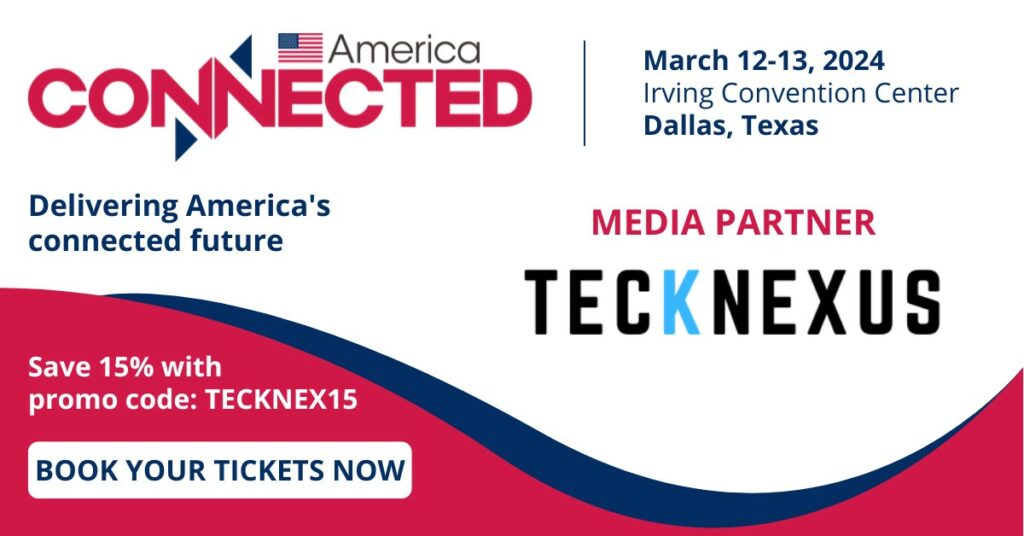Introduction
Thank you for your interest, Hema. Since we launched this initiative in October, the traction has been remarkable. This unique approach, centered around the small cell framework, has piqued industry curiosity. Over the past 14 weeks, we’ve made substantial progress. Let me provide you with an overview, focusing especially on the blueprint’s current status and its implications for the automotive sector, given its prominence in this month’s magazine.
Blueprints for Enterprise 5G Networks
The Small Cell Forum is in the process of creating a set of technical and deployment blueprints. These are intended to fill a critical void in the mobile network domain. By offering common reference designs and deployment procedures, our aim is to streamline the development of small cell networks, reducing associated time, costs, and risks.
Significance in the Current Market Landscape
In the current landscape, smaller private network operators are receiving significant funding, sometimes in the hundreds of millions. This indicates the growing heat and potential of the private enterprise market. The work that we ad SCF are undertaking is poised to make a significant impact in this burgeoning sector. We have been diligently working on creating an ecosystem for the next generation of services. The focus is on developing reference designs, neutral hosting, and more that will form the basis for a thriving marketplace.
Progress on Blueprints
Currently, we’ve made significant strides with our blueprints. There’s a notable emphasis on Minimum Viable Offerings (MVOs), which are already in place. Our vision is to foster partnerships and collaborations, making it possible to deliver comprehensive blueprints and frameworks that can benefit the entire industry.
The Small Cell Forum (SCF) has achieved significant progress with their blueprints. Emphasizing the development of components like FAPI and Sub-6 reference designs, the SCF seeks to nurture the entire ecosystem. Their vision is to create a marketplace wherein all advancements related to small cells can transition to next-generation services. Given the burgeoning interest in the private enterprise market, the SCF’s work promises to have a lasting impact on the industry.
Focus on Automotive and CV2X
The automotive sector, especially with CV2X (Cellular Vehicle-to-Everything) connectivity, is a focal point for our discussions. As highlighted in our press release last October, we’re aiming to enable various blueprints, with CV2X being paramount. Collaborations with Standard Development Organizations (SDOs) and other industry stakeholders are crucial to this endeavor. Our ambition extends to integrating the automotive sector with areas like Industry 4.0 and smart city applications, all built on top of our 5G enterprise blueprints.
Framework and Goals for the Automotive Sector
When we delve into the framework surrounding the small cell ecosystem, our overarching objective is to ensure that the automotive sector’s connectivity and infotainment needs are seamlessly integrated. This means building a cognitive connectivity framework, possibly focused on outdoor small cells, be it sub-six or millimeter wave. But the real value SCF can offer to automotive SDOs like 5GAA is in bridging the gap between roadside units and small cells. The aim is to combine the telecommunications edge and the automotive edge, creating a unified fabric. This cohesive integration allows for unprecedented innovation and offers a plethora of possibilities.
The automotive sector and CV2X (Cellular Vehicle-to-Everything) connectivity have become focal points for SCF discussions. As highlighted in their October press release, the aim is to launch various blueprints, with CV2X being pivotal. Collaborations with Standard Development Organizations (SDOs) and other industry stakeholders are vital. The SCF is enthusiastic about integrating the automotive sector with areas like Industry 4.0 and smart city applications, all built on top of their 5G enterprise blueprints. Their major goal revolves around ensuring connectivity and infotainment in the automotive sector are supported within advanced, integrated frameworks.
Innovative Connectivity Solutions
SCF’s vision encompasses the coordination of outdoor small cells, whether Sub-6 or millimeter wave, with the overall connectivity framework. The collaboration between roadside units and small cells, coupled with the merging of telecommunication and automotive edges, can spur unparalleled innovations. By bringing these elements together, SCF aspires to create a cohesive infrastructure where Vehicle-to-Vehicle (V2V) and Vehicle-to-Infrastructure (V2I) communications can seamlessly coordinate with computer vision and smart traffic beacons. This holistic approach could revolutionize real-time traffic coordination.
A Comprehensive 5G and Automotive Ecosystem
Modern vehicles are evolving into software-defined entities. Essential components of these next-generation cars include mobile edge infrastructures, central ECUs, vehicle sensors, IoT networks, CV2X platforms, infotainment systems, OTA platforms, and cloud-native centralized EEA. While vehicles have multiple internal networks communicating based on regulatory specifications, the interaction between cars, infrastructures, smart city networks, and hyperscaler networks demands varied layers of support. By merging the CV2X connectivity from RSU vendors with 5G connectivity from MNOs, there’s potential for a more integrated and cost-effective solution. The synergy between these connectivity facets, combined with smart city network controls, can significantly enhance the automotive experience.
Developments and Progress: The Small Cell Forum (SCF) has made significant strides in its mission to unify various technologies and platforms. With developments around FAPI, Sub-6 reference designs, neutral host tools, and more, the goal is to cultivate a comprehensive ecosystem. By fostering this cohesive environment, the SCF aspires to create a marketplace that encompasses all aspects of small cell advancements, paving the way for next-generation services.
Integration with Automotive and CV2X: SCF acknowledges the importance of automotive and CV2X (Cellular Vehicle-to-Everything) connectivity. To this end, there’s an ongoing effort to align the SCF’s objectives with these sectors. As alluded to in a recent press release, the SCF plans to initiate various blueprints, with CV2X being a key focus. Collaborations with Standard Development Organizations (SDOs) and other industry players are crucial to this endeavor. The SCF is particularly keen on integrating automotive applications with areas like Industry 4.0 and smart city solutions, built on the foundation of their 5G enterprise blueprints.
Unified Connectivity Vision: Central to the SCF’s vision is the concept of converging various technologies onto a single-edge infrastructure. By doing so, networks from smart cities, 5G MNOs, Roadside Units (RSUs), and software-defined cars can seamlessly interact and cooperate. This unification would enable a marketplace where major hyperscalers like AWS, Azure, and Google can offer services related to mobility, infotainment, advanced analytics, industrial cloud, autopilot systems, and OTA platforms.
Role of Federated AI in Connectivity: A significant disruptor in this space is the potential of federated artificial intelligence (AI) and machine learning (ML). As the industry transitions from 5G to 6G, the SCF envisions a comprehensive ecosystem where orchestration tools communicate effectively. This would be achieved by gathering data from various sources, such as software-defined cars, 5G networks, smart city systems, and hyperscalers. This collective data can then be processed and utilized for a multitude of purposes, including governmental use, enterprise services, and public applications. By embedding AI capabilities into these networks, the SCF aims to create a base for data monetization and the development of new marketplaces and applications.
A Call to Collaborate
The SCF is making earnest appeals to the industry to collaborate on its blueprint initiatives. While individual SDOs are making commendable progress in their respective areas, the SCF emphasizes the importance of coordination and cooperation for success, especially in the CV2X environment. As 6G initiatives gain momentum, the SCF remains optimistic about the future. They encourage stakeholders to participate in shaping blueprints and be part of a smart, cohesive ecosystem that promises to redefine the future in a transformative way.
Related Content





























































